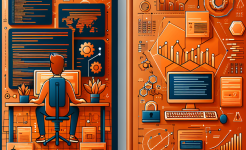Rapid Prototyping in Agile Development
Rapid prototyping in agile development is a crucial practice that allows teams to quickly build a working model of the product. This prototype is not a fully polished version but rather a representation of the core functionality. It serves as a means to test ideas, gather feedback from stakeholders, and validate assumptions early in the development process. By creating a tangible product early on, agile teams can identify potential issues and make necessary adjustments before investing a significant amount of time and resources into the full development.
The process of rapid prototyping in agile often involves iterative cycles. Developers start with a basic understanding of the requirements and build a simple prototype. This prototype is then presented to the stakeholders, such as end-users, product owners, and other relevant parties. Their feedback is collected, and based on this input, the prototype is refined and improved in the next iteration. This continuous feedback loop helps in aligning the product with the actual needs of the users and ensures that the development is on the right track.
Another advantage of rapid prototyping in agile is that it promotes collaboration within the team. Different members, including developers, designers, and testers, work together closely during the prototyping phase. This cross-functional collaboration leads to a better understanding of each other's roles and responsibilities, and also helps in integrating different aspects of the product, such as functionality, usability, and performance. It breaks down the silos between different disciplines and fosters a more cohesive and efficient development environment.
Detailed Design in Traditional Development
Detailed design in traditional development is a comprehensive and in-depth process that occurs before the actual coding begins. It involves creating a detailed blueprint of the software system, including the architecture, data structures, algorithms, and interfaces. The goal is to have a complete and well-defined plan that leaves little room for ambiguity during the development phase. This level of detail ensures that the developers have a clear understanding of what needs to be built and how it should be built.
In the detailed design phase of traditional development, various techniques and tools are used. UML (Unified Modeling Language) diagrams, such as class diagrams, sequence diagrams, and activity diagrams, are commonly employed to represent different aspects of the system. These diagrams provide a visual representation of the design, making it easier for the team members to communicate and understand the overall structure and behavior of the software. Additionally, design documents are created that describe the design decisions, assumptions, and constraints in detail.

One of the main benefits of detailed design in traditional development is predictability. With a detailed plan in place, the project managers can estimate the time, resources, and costs more accurately. This allows for better project planning and scheduling, reducing the risk of unexpected delays or cost overruns. Moreover, the detailed design provides a solid foundation for quality assurance. The well-defined specifications make it easier to develop test cases and ensure that the final product meets the requirements.
Comparing the Two Approaches
When comparing rapid prototyping in agile development and detailed design in traditional development, it is important to consider the nature of the project, the requirements, and the development environment. Rapid prototyping in agile is highly suitable for projects where the requirements are not well-defined or are likely to change. It allows for flexibility and adaptability, enabling the team to respond quickly to new insights and feedback. This approach is also beneficial for projects that require a high level of user involvement, as the early prototypes can be used to engage with the users and gather their input.
On the other hand, detailed design in traditional development is more appropriate for projects with stable and well-understood requirements. When the scope of the project is clear and there are few expected changes, a detailed design can provide a structured and efficient way to develop the software. It is also suitable for projects where strict quality control and predictability are crucial, such as in safety-critical systems or large-scale enterprise applications.
However, both approaches have their limitations. Rapid prototyping in agile may lead to a lack of long-term planning and architectural integrity if not managed properly. The focus on quick iterations and immediate feedback may cause the team to overlook some important design considerations. In contrast, detailed design in traditional development can be time-consuming and inflexible. The upfront investment in creating a detailed design may be wasted if the requirements change significantly during the development process.
Conclusion
In conclusion, rapid prototyping in agile development and detailed design in traditional development are two distinct approaches with their own strengths and weaknesses. Agile development's rapid prototyping offers flexibility, early feedback, and enhanced collaboration, making it a great choice for projects with evolving requirements and a need for user engagement. Traditional development's detailed design, on the other hand, provides predictability, a solid foundation for quality assurance, and is more suitable for projects with stable requirements.
The choice between the two should be based on a careful assessment of the project's characteristics, including the nature of the requirements, the level of uncertainty, the need for user involvement, and the importance of predictability and quality control. In some cases, a hybrid approach that combines elements of both may be the most effective solution. By understanding the capabilities and limitations of each approach, software development teams can make informed decisions and select the most appropriate strategy to ensure the success of their projects. Whether it's the iterative and flexible nature of rapid prototyping in agile or the structured and detailed approach of traditional development, the ultimate goal is to deliver a high-quality product that meets the needs of the users and the business.
ARTICLE TITLE :Rapid prototyping in agile development vs. detailed design in traditional development ,AUTHOR :ITpmlib

















